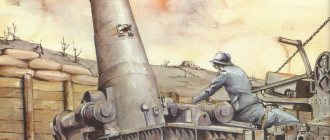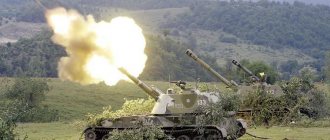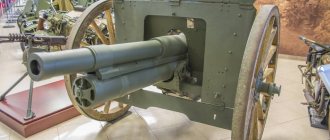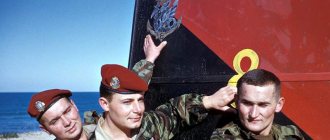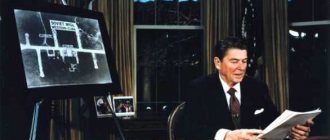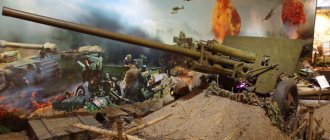Home » Artillery » Artillery of Napoleon's Grand Army Part 1
Artillery
byakin 08.10.2021 1131
13
in Favoritesin Favoritesfrom Favorites 7
Artillery of Napoleon's Grand Army Part 1
Napoleon Bonaparte liked to say that great battles are won by artillery. Being an artilleryman by training, he attached particular importance to maintaining this type of troops at a high level. If under the old regime artillery was recognized as something worse than infantry and cavalry, and seniority was considered after 62 infantry regiments (but before the 63rd and subsequent ones), then during the reign of Napoleon this order not only changed in the reverse order, but also a separate one was created imperial artillery corps.
In the first half of the 18th century, French artillery was superior to all others due to the fact that France was the first to standardize artillery pieces. Standardization was carried out by General Jean Florent de Vallières (1667–1759), who introduced a uniform classification system for guns, dividing them into categories from 4- to 24-pounders. The disadvantage of this system was that the guns were strong, but at the same time heavy, which meant they were clumsy and clumsy in battle, on the march, and in maintenance.
The Seven Years' War proved the superiority of Austrian artillery, where light 3-, 6- and 12-pounder guns were introduced, as well as light mortars. Austria was followed by other countries, especially Prussia.
France's loss of superiority in artillery persuaded Minister of War Etienne-François de Choiseul to carry out a new reform of this type of military force. He entrusted this task to General Jean Baptiste Vaquette de Gribeauval (1715–1789), who served in Austria from 1756–1762 and had the opportunity to become familiar with the Austrian artillery system. Although conservative military officers, and especially de Vallières' son, tried to block his reform, Choiseul's patronage allowed Gribeauval to fundamentally change French artillery starting in 1776.
Gribeauval system
These changes, known as the Gribeauval system, meant complete standardization not only of the guns, but of the entire artillery fleet. Not only the guns themselves were unified, but also their carriages, limbers, charging boxes, ammunition and tools. Since then, it was possible, for example, to replace broken gun wheels with wheels from limbers or charging boxes, or even from quartermaster carts.
Another merit of Gribeauval was that he reduced the gap between the caliber of the gun and the caliber of the cannonball, which until that time could reach half an inch. With a reduced gap, the cores fit more tightly to the bore, and there was no need to drive wads into the barrel. First of all, it was possible to reduce the charge of gunpowder while maintaining the firing range. This, in turn, made it possible to cast guns with thinner barrels, and thus lighter ones. For example, Gribeauval's 12-pounder gun became half the weight of the similar Vallières gun.
Gribeauval also divided artillery into four main types: field, siege, garrison and coastal. Guns larger than 12 pounds were included in the last three. Thus, field artillery acquired the distinct character of light artillery.
Based on the royal decree (ordinance) of November 3, 1776, the artillery consisted of 7 foot regiments, 6 miner companies and 9 working companies. Each regiment had two battalions of gunners and sappers, consisting of two so-called “brigades”. The first brigade of such a battalion consisted of four companies of gunners and one company of sappers. Each company, according to wartime standards, consisted of 71 soldiers.
Although the mining companies were part of the artillery units, they constituted a separate corps. The mining companies consisted of 82 soldiers and were stationed in Verdun. The work companies were distributed among the royal arsenals. Each of them consisted of 71 soldiers. All French artillery was commanded by the first inspector general (artillery general).
Artillery regiments bore the names of the cities in which they were raised, although by 1789 they may have changed locations to entirely different locations. The seniority of the regiments was as follows: Strasbourg, Oxon (located in Metz), Tulle (in La Fère), Besançon (in Oxon), Grenoble (in Valence), La Fère (in Douai), Metz (in Besançon).
In 1791, the organization of artillery was changed. First of all, by decree of April 1, the old names of the regiments were canceled, which received serial numbers: La Fère - 1st, Metz - 2nd, Besançon - 3rd, Grenoble - 4th, Strasbourg - 5th, Oxon – 6th, Tul – 7th.
The mining companies were also numbered: Catalan - 1st, Rugy - 2nd, Cognon - 3rd, Barberin - 4th, Bouville - 5th, Chazelle - 6th. As well as working companies: Nazemont - 1st, Guerin senior - 2nd, Rostand - 3rd, Guerin junior - 4th, Croyer - 5th, Puveuren - 6th, Dubuisson - 7th, Guret – 8th, Dufort – 9th. A new, 10th working company was also formed.
Each of the seven foot artillery regiments consisted of two battalions of 10 companies, numbering 55 gunners. The wartime staff of the companies was increased by decree of September 20, 1791 by 20 people, that is, by 400 people in the regiment. But the staff of the mining and working companies decreased - now they numbered 63 and 55 people, respectively. The post of the first Inspector General of Artillery was also abolished.
Thus, the artillery corps consisted of 8,442 soldiers and officers in 7 regiments, as well as 409 miners and 590 workers in 10 companies.
Napoleon's guns in the Moscow Kremlin: chairs are crawling like cockroaches
During the Soviet period, the integrity of the Kremlin collection was violated. Between 1945 and 1965, 119 guns, mostly of Prussian and Austrian origin, were transferred to regional museums:
- 69 guns were transferred to the Battle of Borodino Panorama Museum in Moscow in 1962;
- 38 guns were transferred to the State Borodino Military Historical Museum-Reserve in 1945-1955;
- 3 guns were transferred to the State Historical Museum in 1941-1958 and are on display at the Museum of the Patriotic War of 1812;
- 3 guns were transferred to the Smolensk State United Historical, Architectural and Art Museum-Reserve in 1962;
- 2 guns were transferred in 1962 to the Tarutino Military-Historical Museum of the Patriotic War of 1812;
- 2 guns were transferred in 1964 to the Maloyaroslavets Military History Museum of 1812;
- 2 guns were transferred in 1965 to the State Museum of the Belarusian SSR. Today one of them is exhibited in the National Museum of the Republic of Belarus, the other in the Borisov United Museum.
This is not very good for the integrity of the collection, but for examining the guns in all details it is very, very good. In all museums you can see a torel with vingrad, as well as inscriptions about the place and date of casting, embossed on the torel belt. In the Kremlin, such luxury is not available - the guns are tightly pushed against the walls and even if you climb onto the stone pedestal, it is impossible to see what is behind them.
Growing prestige of artillery
Then, on April 29, 1792, a decree was issued on the formation of a new type of troops - nine companies of horse artillery with 76 soldiers each. That same year, on June 1, the 1st and 2nd Foot Artillery Regiments each received two companies of horse artillery, and the remaining regiments received one company each. That is, horse artillery has not yet been allocated as a separate branch of the military.
Starting from 1791–1792, the importance and prestige of artillery increased in the French army. This was the only branch of the army that was almost unaffected by the desertion and betrayal of royal officers, which became more frequent in June 1791 under the influence of Louis XVI's attempt to escape to Varennes.
Much fewer nobles served in the artillery, a purely technical branch of the army, than in the infantry and cavalry. Therefore, artillery retained a high level of combat effectiveness and played a decisive role in the defeat of the Prussian army marching on Paris in 1792. One could even say that it was the resilience of the artillerymen in the Battle of Valmy that decided the outcome of the battle, in which poorly prepared regiments, formed from hastily trained volunteers, were not always able to repel the bayonet attacks of the Prussians and withstand the fire of the Prussian artillery.
It was as a result of the brilliant resilience of the artillerymen, as well as the growing threat to the borders of the Republic, that in 1792-1793 the artillery corps was increased to 8 foot and 9 horse regiments. The horse artillery regiments were distributed among the following garrisons: 1st - in Toulouse, 2nd - in Strasbourg, 3rd - in Douai, 4th - in Metz, 5th - in Grenoble, 6th - in Metz , 7th - in Toulouse, 8th - in Douai, 9th - in Besançon. In 1796, the number of horse artillery was reduced to eight regiments.
Artillery received further development in 1796. Now it consisted of eight infantry and eight cavalry regiments, and the number of working companies had increased to twelve. Miner and sapper companies were excluded from the artillery and transferred to the engineering troops. And instead of them, a new pontoon corps was formed - so far only as part of one battalion located in Strasbourg.
In 1803, in connection with preparations for war with England, another reorganization was carried out. Eight infantry regiments remained, but the number of cavalry regiments was reduced to six. Instead, the number of working companies increased to fifteen, and the pontoon battalions to two. A new type of military force arose - eight battalions of artillery convoys.
The next reorganization of the already imperial artillery corps came in 1804. Then 100 coastal defense gunner companies were formed, recruited from veterans whose age or health condition did not allow them to serve in linear units. The same role was played by companies of stationary gunners (sedentaires), located on the coastal islands such as If, Noirmoutier, Aix, Oleron, Re, etc. Gradually, due to the increase in the coastline of France, the number of coastal defense companies reached 145, and stationary - 33. In addition, 25 veteran companies were located in the fortresses.
In the same 1804, the number of working companies increased to sixteen, and in 1812 there were already nineteen. The number of artillery convoy battalions was increased to twenty-two. Three companies of armorers also appeared, repairing weapons and equipment. Four companies were added in 1806, and five more in 1809.
This organization of artillery remained throughout the Napoleonic wars, with the only exception being that in 1809 a supply company was added to the 22 line artillery companies in each regiment, and in 1814 the number of line companies increased to 28.
The post of first inspector general, as already stated, was abolished soon after the death of Gribeauval. Only Bonaparte brought him back to the time of the Consulate, appointing Francois Marie d'Aboville as the first inspector general. His successors were successively Auguste Frédéric Louis Marmont (1801–1804), Nicolas Songy de Courbon (1804–1810), Jean Ambroise Baston de Lariboisiere (1811–1812), Jean-Baptiste Hebley (1813) and Jean-Barthelmo Sorbier (1813– 1815). The first inspector general presided over the board of inspectors general (major generals and lieutenant generals). But since inspectors general, as a rule, were in the active army, the council met extremely rarely.
At the corps level of the Grand Army, the artillery was commanded by a commandant with the rank of lieutenant general. He was always at corps headquarters and distributed artillery among infantry divisions and cavalry brigades or consolidated it into “large batteries.”
Napoleon considered artillery the main firepower in battle. Already in his first campaigns in Italy and Egypt, he tried to use artillery to deliver a decisive blow to the enemy. Subsequently, he tried to constantly increase the saturation of his troops with artillery.
At Castiglione (1796) he could concentrate only a few guns in the main direction. At Marengo (1800) he had 18 guns against 92 Austrian ones. At Austerlitz (1805) he placed 139 guns against 278 Austrian and Russian ones. At Wagram (1809), Napoleon brought 582 guns, and the Austrians - 452. Finally, at Borodino (1812), Napoleon had 587 guns, and the Russians - 624.
Artillery under fire. Painting by Eugene Laliepvre. During the Napoleonic era, artillery became the main striking force of the French army and acquired unprecedented prestige
This was the peak moment in the development of French artillery, as the number of guns with which the French could face the Allies in 1813–1814 was significantly lower. This happened primarily due to the loss of the entire artillery fleet during the retreat from Russia. Despite enormous efforts, it was impossible to restore the former power of the artillery in such a short period of time.
The number of artillerymen in the French army was constantly and noticeably growing. In 1792 there were 9,500 of them. Three years later, in the War of the Third Coalition, there were already 22 thousand of them. In 1805, the Grand Army numbered 34 thousand artillerymen. And in 1814, immediately before the fall of Napoleon, as many as 103 thousand. However, over time, a significant part of the artillery began to be veterans, who could only be used in the defense of fortresses.
During the revolutionary wars, there was one gun per thousand soldiers. Artillery was then small in number. And it was easier to attract thousands of infantry volunteers into its ranks than to train thousands of professional gunners and give them the appropriate equipment. However, Napoleon persistently strove to ensure that the coefficient of saturation of troops with artillery was as high as possible.
In the campaign of 1805, there were already almost two guns for every thousand infantrymen, and in 1807 - more than two. In the War of 1812, there were already more than three guns for every thousand infantrymen. Napoleon considered saturating the troops with artillery the most important task - due to the loss of veteran infantrymen.
As the combat effectiveness of the infantry decreased, it was necessary to reinforce it more and more with artillery.
Napoleon's guns in the Moscow Kremlin: the failed Vendôme
In mid-November 1812, Commander-in-Chief Prince M.I. Golenishchev-Kutuzov ordered the accounting and collection of captured enemy guns and their delivery to large artillery arsenals and warehouses. Soon followed by the order of Emperor Alexander I to send captured guns to Moscow in the future, so that “in memory of multiple victories and the complete extermination of all enemy forces that dared to enter Russia, a pillar crowned with laurels would be erected from these guns taken from them.” Alexander was prompted to this idea by Napoleon himself, who cast the famous Vendôme Column from Russian and Prussian cannons captured in the Battle of Austerlitz as a symbol of his victory.
The first guns began to arrive in Moscow in January 1813, the last gun was found somewhere near Smolensk in 1819. While the collection of guns was underway, a competition was held for the best project of the “Moscow Vendôme”, in which famous architects of that time participated. It would seem that the fate of the cannons was decided, but for unknown reasons, the column was never erected under Alexander I. They returned to this idea already under Nicholas I in 1830, but everything came down to funding. As always, there was simply not enough money for a grandiose project. The idea with the column was postponed until better times, and the guns were simply put on display in the Kremlin for everyone to see.
Napoleon's guns in the Moscow Kremlin: a mysterious French woman
There is one mysterious cannon in the first group of guns to the right of the south gate of the Arsenal. Judging by the proportions and casting features, it is clearly not from the Napoleonic era. The gun is installed in the top row, so from the ground you can only see the muzzle of the barrel, damaged in battle.
And during one of the excursions I managed to stand on the stones of the first row as if on a step and photograph the upper part of the trunk. This had to be done quickly; the breech did not come out very sharply, but even this was enough to link the gun to the historical time scale.
The first monogram on the muzzle is a ribbon with the motto “Ostendunt tela parentem” (I embody the plans of my ancestors? Who knows the translation?). Below it is a shield entwined with ribbons against the backdrop of a ship's anchor. The inscription on the shield “Le comte de Vermandois, Admiral de France 1682” translates as “Count of Vermandois, Admiral of France.” The Count of Vermandois is Louis of Bourbon, the illegitimate son of Louis XIV and his mistress Louise de La Vallière, Prince of France. In the year of his birth he was named admiral general, and at two years old he was elevated to the title of Admiral of France. He died at the age of 16 (in 1683), most likely from blood poisoning, while participating in the war with Spain for the Spanish Netherlands. Judging by the date on the barrel, the cannon was cast a year before his death.
It was not possible to take a clear image of the breech from above, and at an angle it is difficult to see the details. The motto is unreadable; the male profile most likely belongs to King Louis XIV. In any case, I will have to return to this gun and try to photograph better.
Napoleon's guns in the Moscow Kremlin: old wounds
Looking at Napoleon's cannons in the Moscow Kremlin, you can see not only coats of arms and monograms, but also traces of past battles. Some guns have barrels cut by shrapnel, others have noticeable dents from cannonballs.
In one cannon, a direct hit from a cannonball knocked out a large piece right at the muzzle.
And the retreating soldiers deliberately rendered the guns unusable. Most of the convoy horses were lost, and the hungry and frozen soldiers could not drag the heavy trunks. So they made the guns unsuitable for service with the enemy. It was possible to clog the pilot hole with an iron brush or nail. Simple, but not critical - after removing the nail, the gun was ready to fire again.
It was much more effective to break off or saw off some necessary part, for example the delphi. Such a gun is much more difficult to install on a carriage. And the best thing is to saw off the axle. A cannon with one trunnion will destroy the carriage at the first shot and cripple the gun crew, so no one will dare to fire from such a thing.
How could the exhausted soldiers saw off the delphi, much less the axle? Remember how cold it was then. When metals are strongly cooled, they lose their ductility and become brittle, this is called cold brittleness. The French did not need to saw through the entire thickness of the bronze; a small cut along the contour and a couple of strong blows to the trunnion were enough. When you look at Napoleon's cannons in the Moscow Kremlin, look more carefully. In the ranks of bronze veterans, there will be a glimpse of a disabled person without a pin or delphi.
This concludes my story about Napoleon’s guns in the Moscow Kremlin. There are still many old Russian cannons in the closed area of the Arsenal, but we’ll talk about them some other time.
In order not to miss new articles, you can subscribe to updates
. If you liked the article, please leave a comment or share with your friends on social networks. Text and photo Leonid Kuznetsov. The article also uses photos from the Internet. Drawings of coats of arms and monograms from the catalog of V.A. Petrov “Guns captured from the enemy in 1812.”
All rights reserved © Reprint, partial or complete, only with the consent of the author and with reference to the source.
Napoleon's guns in the Moscow Kremlin: a museum under the windows of the president
Under the Tsar, the Moscow Kremlin was a favorite place for city residents to walk, and anyone could see Napoleon’s cannons. With the Bolsheviks coming to power, the situation changed radically. Members of the government settled in the Kremlin, and accordingly the territory was closed and guarded as a military facility. Until the Khrushchev Thaw, not only to see the guns, but ordinary citizens were simply not allowed to come here. Under Khrushchev, the entrance to the Kremlin was partially opened - it became possible to see museums and architectural monuments freely, but no one was allowed into the government zone. The bulk of government offices at that time were located in the 14th building, so it was possible to go to the Arsenal and see the guns without any problems.
But after the collapse of the USSR, the situation again changed for the worse. At first, access to the eastern wall was closed to repair and touch up the walls of the arsenal - they promised that it would be temporary. Then the 14th building was closed for repairs - they said it would be for two to three years. They strengthened the foundation and load-bearing walls for 8 billion rubles, and in 2015 they decided to demolish the building as having no historical value. Which is what they did by May 2016.
What does this have to do with Napoleon's guns? And the most direct: the Senate has become the working residence of the president. And since some of the windows of his offices look directly onto the eastern wall of the Arsenal, traffic around Senate Square was blocked for security reasons. What if you are not interested in guns, but look into the windows opposite? In short, there is no point in walking under the windows of a sensitive facility!
Napoleon's guns in the Moscow Kremlin: how to get on the red carpet
Today the situation looks like this. In free mode, you can see only about a hundred barrels to the left of the southern wall of the Arsenal (green line on the map).
To the right of the south gate (orange line) the closed area begins. You can't get close, but at least you can look from afar.
But the entire exposition along the eastern wall (red line) is not visible even from afar, although the bulk of the trunks are concentrated here.
So, are the cannons at the eastern wall languishing in captivity, like concubines in an eastern harem? But no! In 2022, a lecture and excursion program “The Art of Casting: Kremlin Cannons and Bells” appeared in the Kremlin. Accompanied by its author, Lydia Yuryevna Ginze, you can see ALL of Napoleon’s guns in the Moscow Kremlin without exception. Buy a ticket at the Kremlin box office - and go to Napoleonic cannons! At the end of 2022, the cannon part of the lecture was separated from the bell part, now it is called “Guns of the Moscow Kremlin: winners and losers.” The program lasts about three hours. A walk through the “red zone” takes 20-30 minutes, and the group is accompanied by an employee of the Commandant’s Office. The lecture is held only on Sundays, once or twice a month. You can find out about the nearest event date here
>>>
.
Several years ago, brass plaques were returned to the Kremlin wall before the start of the cannon row. Now everyone knows what kind of guns lie near the walls of the Arsenal. Well, at least those who can read.
Napoleon's cannons in the Moscow Kremlin are laid out in rows on stone two-level podiums, with the muzzle forward. The first level is located quite high from the ground level, but the coats of arms in the muzzle and the delphs of the trunks laid on it can be seen very well. The coats of arms in the torel part are a little worse, but if you wish, you can see them too. The inscription on the torels is almost invisible, and the vingrads are not visible at all.
With the guns of the second row, things are even worse - they are visible only from the sides in the muzzle. The option to stand on a step on the support of the first row is very rare - security in most cases asks you not to do this again. But even in the front row there is something to see. I bring to your attention my photography, sorted by country.
